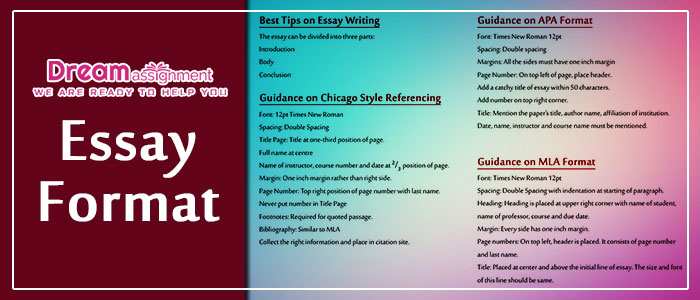-
How to write an outline for an essay?
Attempting to devise a composition for the essay assignment is one of the most challenging staffs of the dissertation method. An essay is a bunch of words which should be crafted in a beautiful way to make it interpretive and effective. Every student must follow some steps to make a suitable outline for their homework assignments. Practice and skills are necessary; striving to figure out all writing standards at once and push it all into your essay is impossible. Creating a comprehensive outline before starting the draft paper is a reliable method to make sure to put the concepts in a fair and sensible way. We are hereby providing some effective steps that may help you to formulate useful outlines for your essay papers.
-
Essay Format:

- Select a Good Topic:
An attractive and appealing theme can make you score better in the academics. It appears to be an easy tip, but it is a significant one. After a suitable topic is chosen, try to break the main topic into different sub-topics and sections. This improves the possibility of readability. Before diving into the custom essay, you should create a sketch of the body content to classify the pre-eminence and principal features.
- Preparing the Intro Para:
An essay should contain an introduction, minimum of two paragraphs for the body content, and a conclusion. If you are writing a research article, then an abstract, a comprehensive thesis statement, and a recommendation part are to be included. The introduction part must involve an overall brief discussion of the problem/topic you’ve chosen. It is just an overview of the upcoming discussion. No evaluation of the topic and objective analysis would be included in this section. This paragraph must contain a one-sentence thesis statement- a condensed essence of the foremost key points or claims of the paper.
- Crafting the Body Content:
In the Body Content, every section must be enclosed by an exact response on the topic with the assistance of appropriate discussion, calculation (if needed), and citation. You should concern with ethos, logos, pathos, etc. to include the essence of your argument of the topic. The correct ways to structure a paragraph is to give a topic sentence by making a point then add the supporting sentences with references. It is a good way to go through with two ideas to write a literature review. You have to support/oppose the previous research statement by displaying appropriate reasons. Finally, the mapping of body paragraphs should follow a template as we describe below. Supporting evidence is must in this section and you may incorporate graphs, charts, or other pictorial visualizations to strongly support your argument.
- Conclusion Part:
At the end of the content, a conclusion part must be presented to explain the key verdicts of the essay and make suitable judgments regarding the topic. The thesis statement can be restated here. Just summarize the most significant points but don’t include any supplementary opinion. End the conclusion with a resolution/suggestion/comment. You may add the recommendation part here to address the reader for any future research proposal on such a topic.
-
Outline Formatting Factors:
- Generalizing:
The initial move is to look over all of the statements put in the essay and allows it to be a generic category. You can attempt to reuse kinds of important points whenever possible. Now, in the time of proofreading, your purpose is to lessen your records to no more than a sheet of classification listing. You should also check the section headings and theorize specific bits of information.
- Ordering:
With you write your thesis in the paper; decide to obtain a plan that the tickets might be organized in one statement or two which strengthens the argument. You should have to compare as well as contrast the view of other writers before starting a discussion of the essay. It is required to list the paragraphs and prioritize them on the basis of importance and relevancy.
- Using a standard alphanumeric structure for outlining:
To easily identify the bulleting structure, using the alphanumeric outline is the most popular way. The major headings can be identified by the Roman numbers, followed by the subdivisions in capitalized characters, Arabic ciphers, etc. The composition of your opinions, values, and statistics would appear in this way.
- A Basic Outline of an Essay:
- Introduction:
- Topic Sentence
- Background of the essay
- Thesis Statement
- Transition
- Body Content #1:
- Paragraph topic sentence
- First point:
- Explanation
- Illustration
- Second point:
- Explanation
- Illustration
- Transition or paragraph conclusion
III. Body Content #2:
- Paragraph topic sentence
- First point:
- Explanation
- Illustration
- Second point:
- Explanation
- Illustration
- Transition or paragraph conclusion
- Conclusion & Recommendation:
- Restate points
- Make an ultimate solution and further recommendation, if any.
After finishing the outline, never forget to go back over the rubric provided to ensure that you’ve met all of the specifications provided by the instructor. Check twice that your essay fully answers the questions/problems given in the assignment. The paper must be unique and should be carried by some scholarly resources. Follow these rules and craft your paper with diplomacy. For further clarification, you may visit https://www.dreamassignment.com/ to get online assistance in essay writing help. Good luck!